
Piazza Cavour - one of the Central squares of the historical centre of Rimini.
The history area of Cavour takes us back in time to the middle ages, then it played an important role and was the center of city life. During its long history the square has changed several names, so, earlier it was called the Municipal square (Piazza del Comunale) or a fountain. Its present name, the area was in 1862.
Currently, the Piazza Cavour is one of the main historical squares of Rimini, could not be better reflects the history of the city and absorbed the spirit of past centuries.
Located Piazza Cavour in the center of Rimini, near the main road - the street Corso d'Augusto, connecting the arch of August from the bridge of Tiberius and conventionally, the cutting of the old town of Rimini into two parts - East and West.
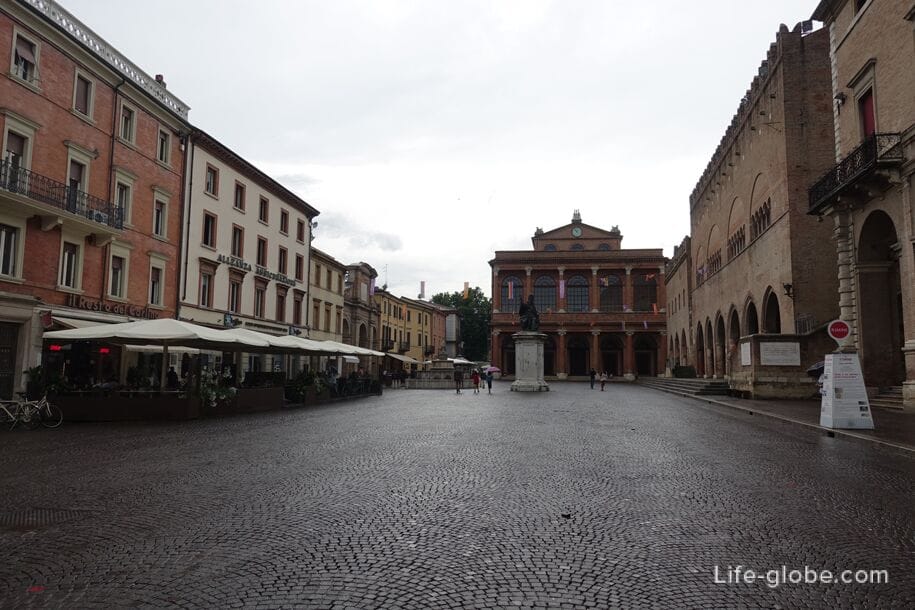
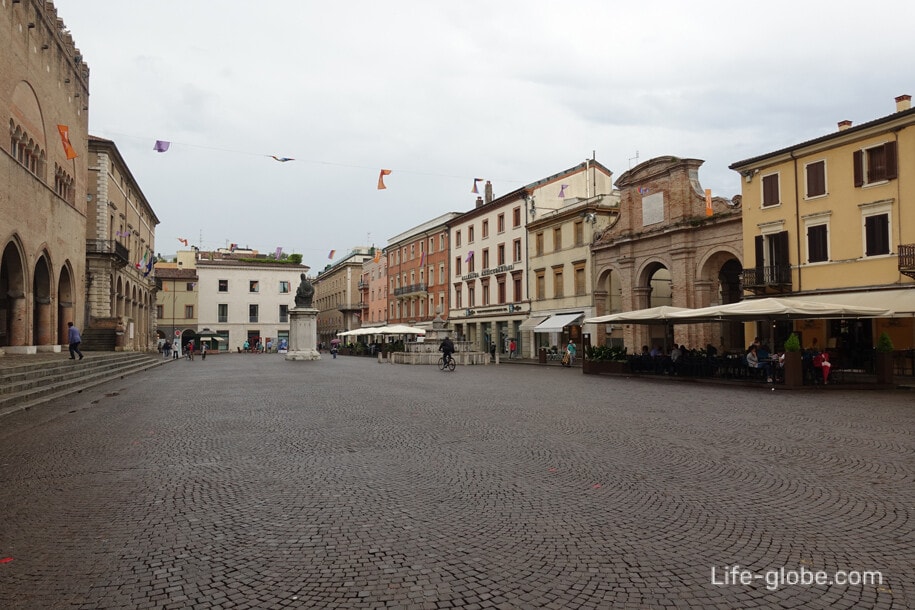
Attractions are the Piazza Cavour quite diverse. With one side of the square are shops, cafes and the old fish market, and on the other - lined up in a row of historic buildings Dating back to different eras, the construction of which was carried out starting from the 13th and the 19th centuries.
However, the monuments are located in Piazza Cavour, look so harmonious, that at first glance do not even say that their construction and integrity, that we can see today, it took six or seven centuries.
Center Piazza Cavour decorate:
- a monument to Pope Paul the fifth. Statue of Paul V was erected by the municipality of Rimini and opened in 1614. The statue itself was cast in 1613 by Sebastiano Sebastiani on the project, Niccol Cordier.
This statue has an interesting historical fact. During the invasion of Napoleon's troops, the townspeople, worried about the fate of the monument, cut tiara and changed the plate, so the sculpture was already dedicated to St. Gaudenzio, patron Saint of Rimini. Subsequently, the monument was returned to its original state. Because of all this, many to this day gossip about who is actually dedicated to the statue;
- a Lump or Pigna fountain (Fontana della Pigna). The fountain was built in 1543 Giovanni da Carrara. This fountain was the only resource of drinking water of Rimini until 1912. On the Fountain you can see numerous commemorative plaques. In 1545, the fountain was placed a statue of St. Pavla, and in 1809 replaced by Guys (Bump), as a symbol of the independence of the Roman Empire.
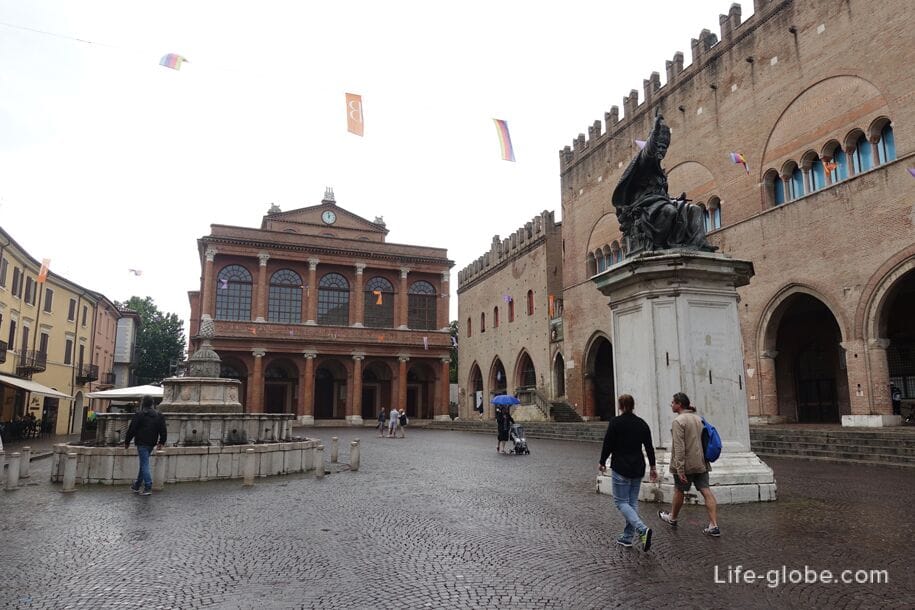
The monuments on Piazza Cavour:
- Palazzo Garampi. The Palace was built by architect L. Carlucci in 1562 project Serlio. Affected after the earthquake in 1672, the building was again rebuilt in 1687 by Francesco Garampi, in honor of which got its current name. During the war, in 1944, the Palace was dilapidated, and then completely restored;
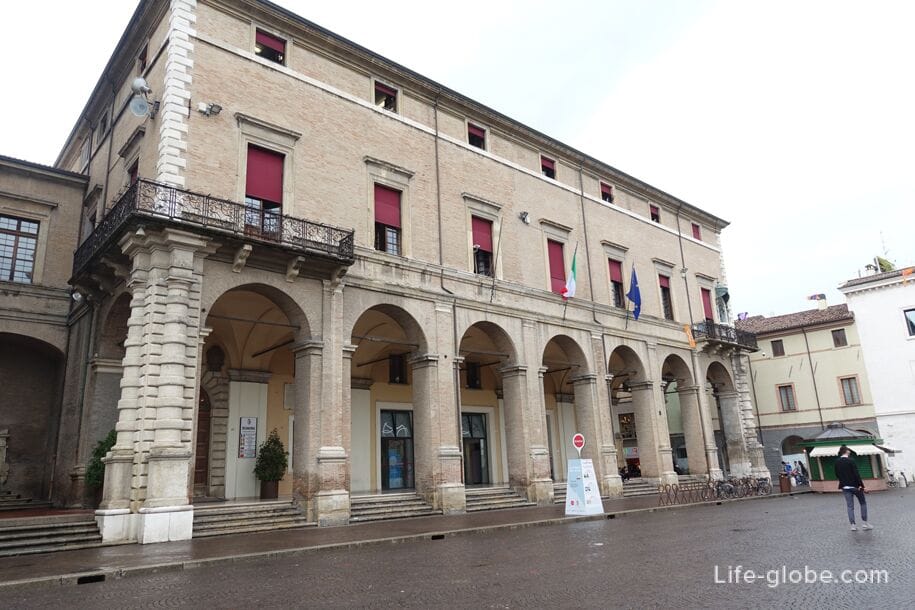
- The Palazzo del Arengo (Palazzo dell'Arengo). The Roman-Gothic crenellated building was erected in 1204 to the people. Palace podvergalsya repairs and restorations in 1562, 1672 and 1919-23. In the days when public justice was, on the porch of the building was stone, on which insolvent debtors were condemned to three strokes on the bare bottom;
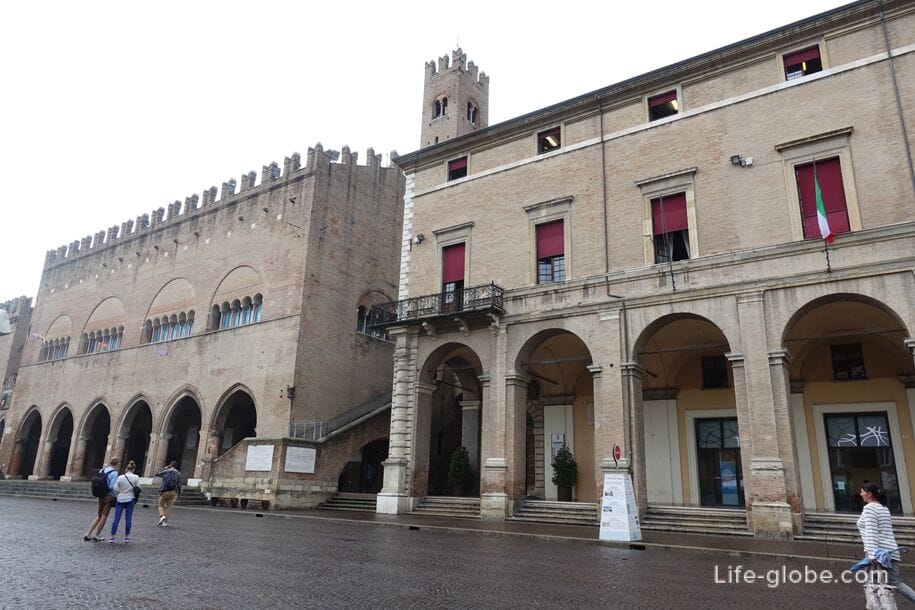
- near the Palace Arengo (left side) is located the Palazzo del Podesta. The Palace was built around 1330 as a residence for the "Gentlemen" of the city. In the sixteenth century the building has undergone significant changes, and its current appearance refers to the restorations of the first decades of the twentieth century. On the ground floor you can see three Gothic arches in the front, once from the Central arch hung a rope intended for public hangings of criminals. The roof of the building is adorned with battlements, below which are five small Windows;
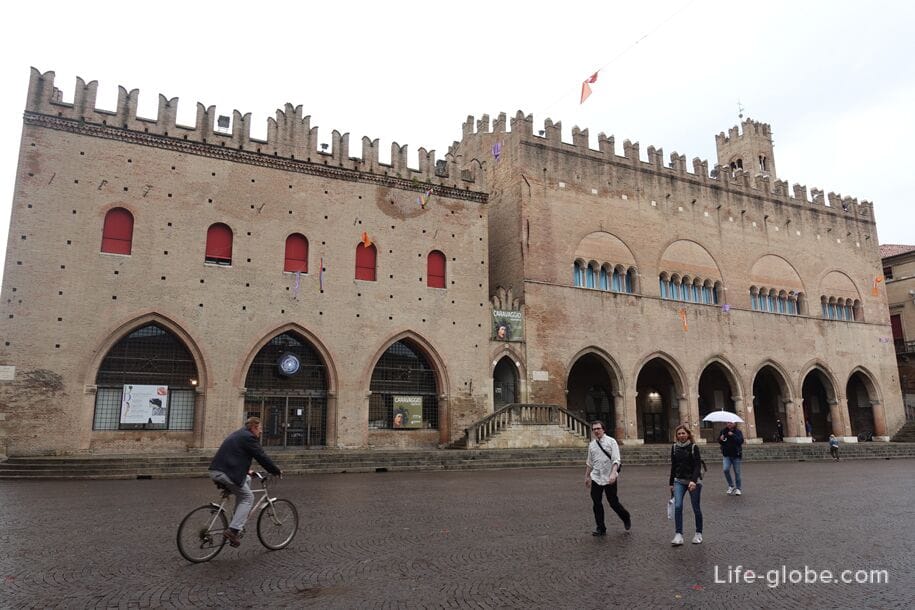
- the Galli theatre (Teatro Galli), located on the southwest side of the square, behind the monument of Pavla the fifth, was opened in 1857 by Giuseppe Verdi;
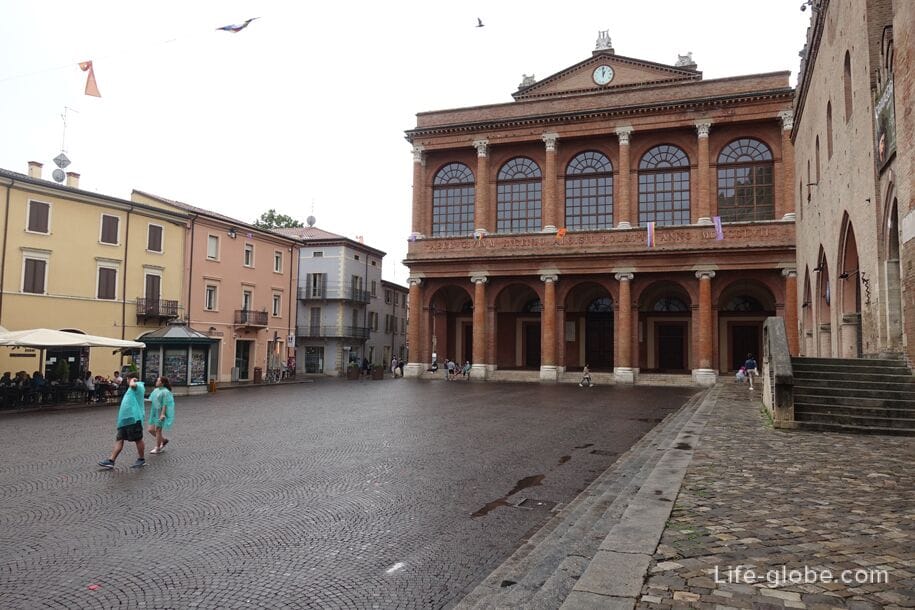
- a separate element catches the eye of the old fish market (La Pescheria), located in front of the palaces. The old fish market is one of the most picturesque and characteristic places in the city. Work of the architect of Rimini Buonamici was built in 1747. In the corners of the market, there are fountains, where many years ago the merchants used to wash the fish.
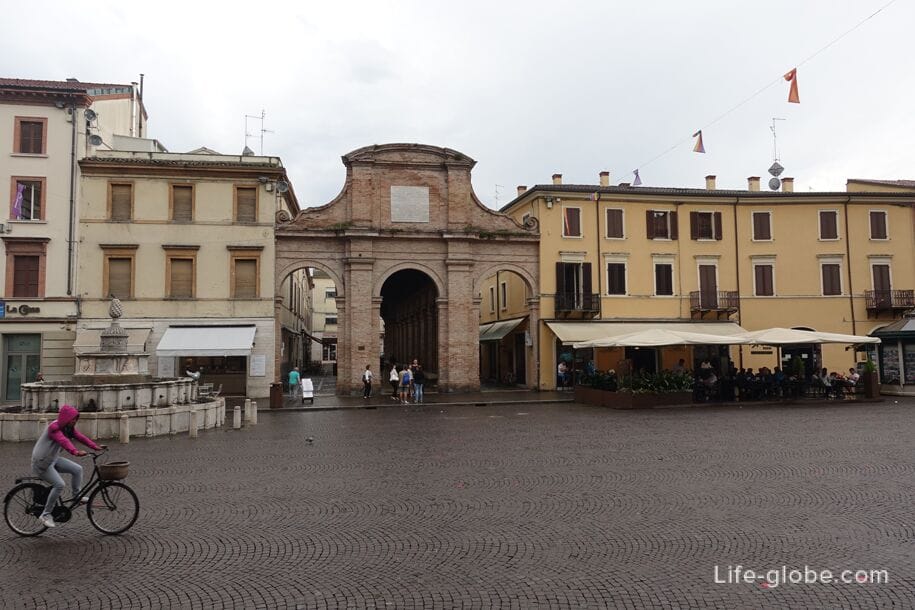
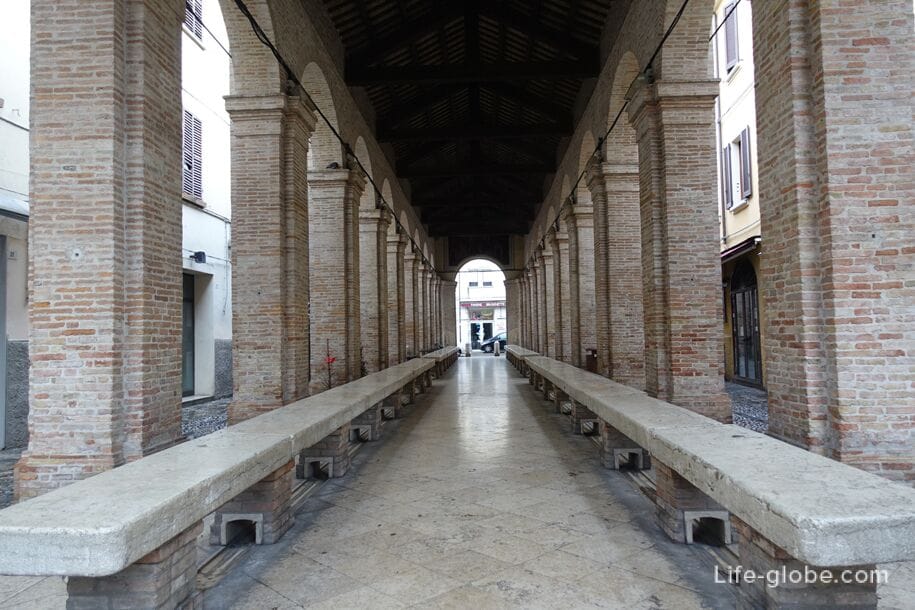
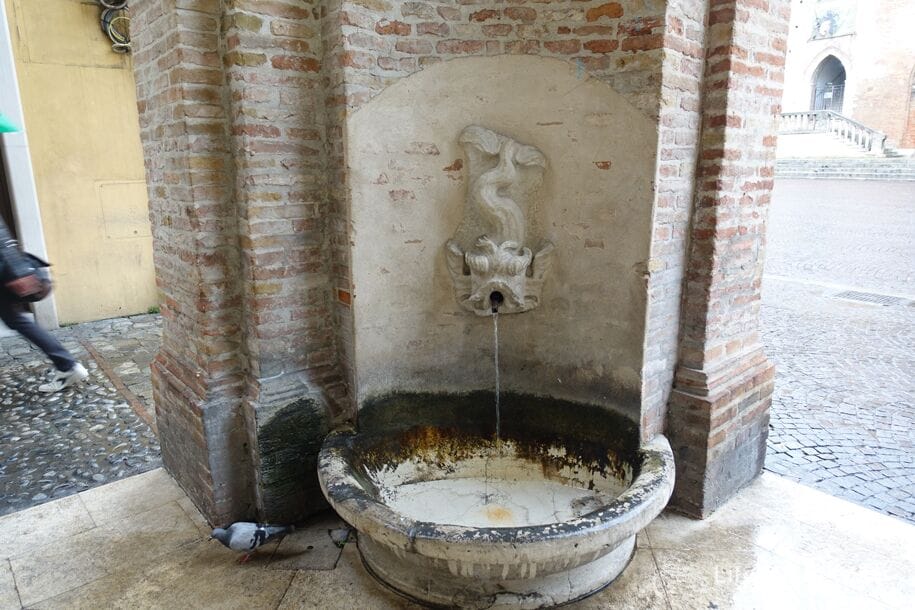
Piazza Cavour on a map of the sites of the historic centre of Rimini

All accommodation facilities in Rimini, from budget to luxury, you can view and book here